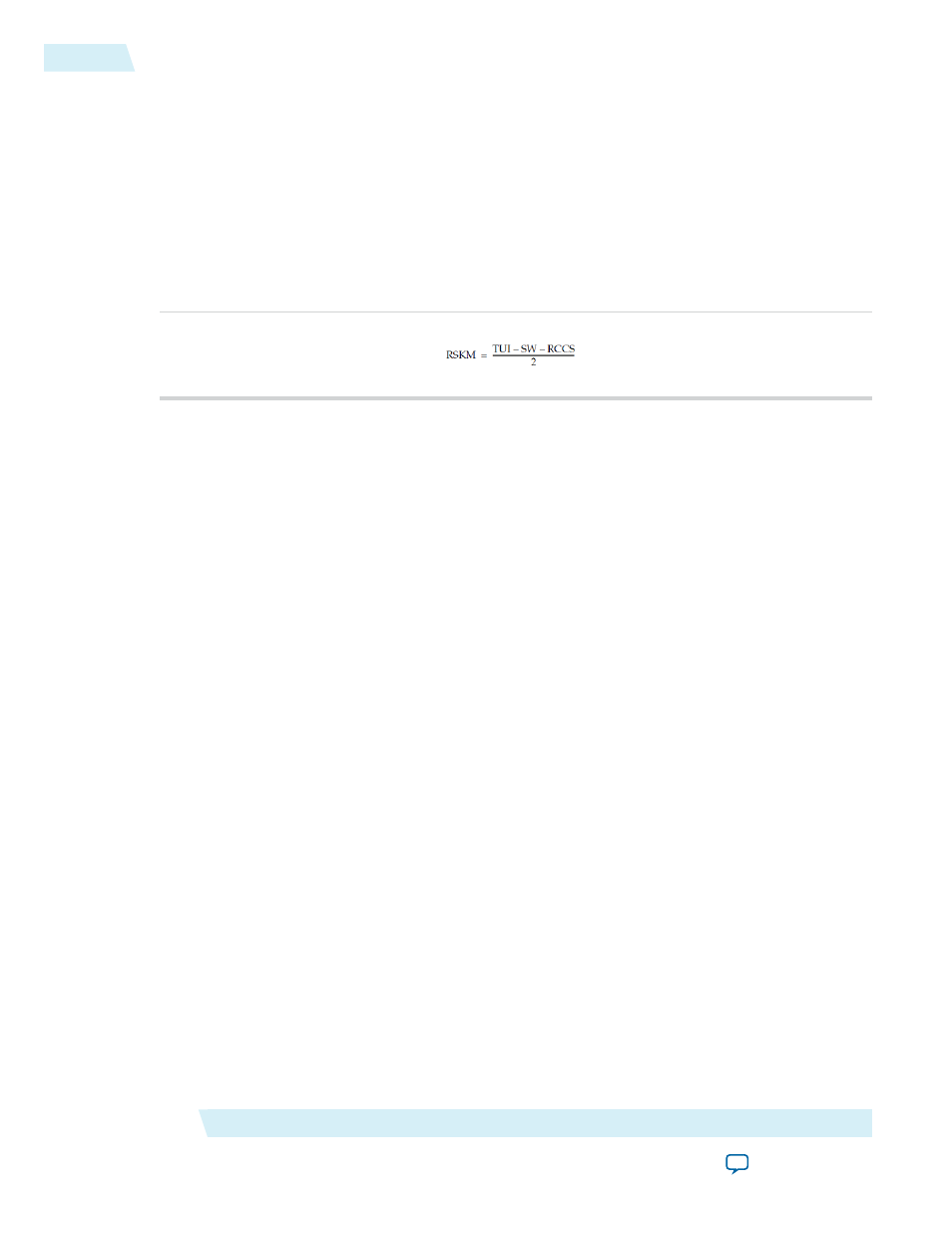Obtaining rskm report, Tx and transmitter channel-to-channel skew (tccs) – Altera LVDS SERDES User Manual
Page 22

Data Rate: 1 Gbps, Board channel-to-channel skew = 200 ps
RCCS = 100 ps (pending characterization)
SW = 300 ps (pending characterization)
TUI = 1000 ps
Total RCCS = RCCS + Board channel-to-channel skew= 100 ps + 200 ps
= 300 ps
RSKM =
= 1000 ps - 300 ps - 300 ps
= 400 ps > 0
Because the RSKM > 0 ps, receiver non-DPA mode must work correctly.
Obtaining Accurate RSKM Results in the TimeQuest Timing Analyzer
To obtain accurate RSKM results in TimeQuest Timing Analyzer, specify your RCCS (in nanoseconds) in
the SDC file:
##########################################################################################
# Modifiable user variables
# Change these values to match your design.
##########################################################################################
set ::RCCS 0.0
Obtaining RSKM Report
For LVDS receivers, the Quartus II software provides the RSKM report showing SW, TUI or LVDS period,
and RSKM values for non-DPA mode. You can generate the RSKM report by executing the
report_rskm
command in the TimeQuest Timing Analyzer.
To obtain the RSKM report, follow these steps:
1. In the Quartus II software, under the Tools menu, click TimeQuest Timing Analyzer
2. In the TimeQuest Timing Analyzer window, under Reports, select Device Specific and click Report
RSKM.
TX and Transmitter Channel-to-Channel Skew (TCCS)
For LVDS TX, the TimeQuest Timing Analyzer reports the TCCS at the I/O analysis. TCCS is the maximum
skew observed across the channels of data and TX output clock.
Altera LVDS SERDES IP Core User Guide
Altera Corporation
ug_altera_lvds
Obtaining Accurate RSKM Results in the TimeQuest Timing Analyzer
22
2014.08.18
